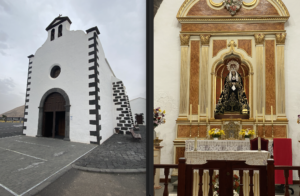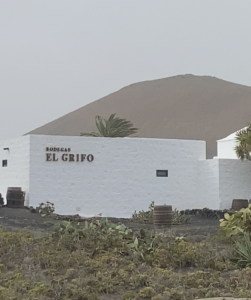At the moment, I am staying with my grandparents on the Canary Island Lanzarote. When assigned to identify a place that had been colonized I decided to look into the history of the Canaries to learn about where I am now. All the pictures used have been taken over the past week and some of the information is from word of mouth.

The Gaunches was the name of the native population of the Canary Islands, located off the coast of West Africa. They had named the island of Lanzarote Caprasia, which translates to Goat Island. In 1336 Italian navigator Lancelotto Malocello arrived on the island, renaming it Lanzarote. In 1341 the King of Portugal commanded both Portuguese and Italian troops to conquer and settle in the islands. The goal was to convert the Guanche population to Christianity, but they also shipped hundreds of natives into the slave trade with Morocco and Andalusia. The French began to invade in 1402, leading to a 50 years worth of battles between the French and Portuguese for the islands. In 1461 the Spanish, under King Ferdinand II and Queen Isabella, began launching attacks on the island, leading to the surrender of the natives and settlers in 1496. The combined impact of Spain’s massive deporatation of Guanches as slaves and the spread of European diseases led to the eventual wipeout of native islanders.

Incentives from governor Alfonso Fernández de Lugo led to a continued immigration of Portuguese and Italians. Sugar cane was planted on the fertile lands of the islands leading to the sugar plantations of the 1500s. With the discovery of the Americas, Spain implemented a judicial zone where ships traveling from the New and Old world were inspected. With the colonization of the Carribeans and Latin America, more sugar could be produced for less money. This caused a decrease in demand for the Canary sugar, turning the plantations into wineries. For several years there was a large export of wine by the Americas and Europe, particularly England where Shakespeare wrote of the wine 3 times. Benjamin Franklin’s financier had a large part in the wine export during the 1770s, leading to the trade funding part of the war of American independence. The oldest winery that is still open is El Grifo, established in 1775.


The architecture of Lanzarote is still largely influenced by Spanish Colonial architecture. The white washed buildings with wooden trim reflect the sun’s rays to keep the temperature inside down. The homes have very little details, except for stone accents and wooden details in the trim. Activist Cesar Manrique, in fear of tourism development in the 1960s, wrote regulations for the island. Here there can be no billboards, like Vermont, and houses can only be one or two stories tall. They can only be painted white with wooden trim painted a specific shade of green or blue.



Sources
- Fleming, E. (2020) Why are Spanish Houses White? Sidmartinbio. https://www.sidmartinbio.org/why-are-spanish-houses-white/
- Horton, O. (2020) Canary Island Wine and its Historical Trading Links. Wine Shop Lanzarote. https://wineshoplanzarote.com/blogs/news/canary-island-s-wine-and-its-historical-trading-links
- The Spanish of the Canary Islands. Pennsylvania State. http://www.personal.psu.edu/jml34/Canary.htm